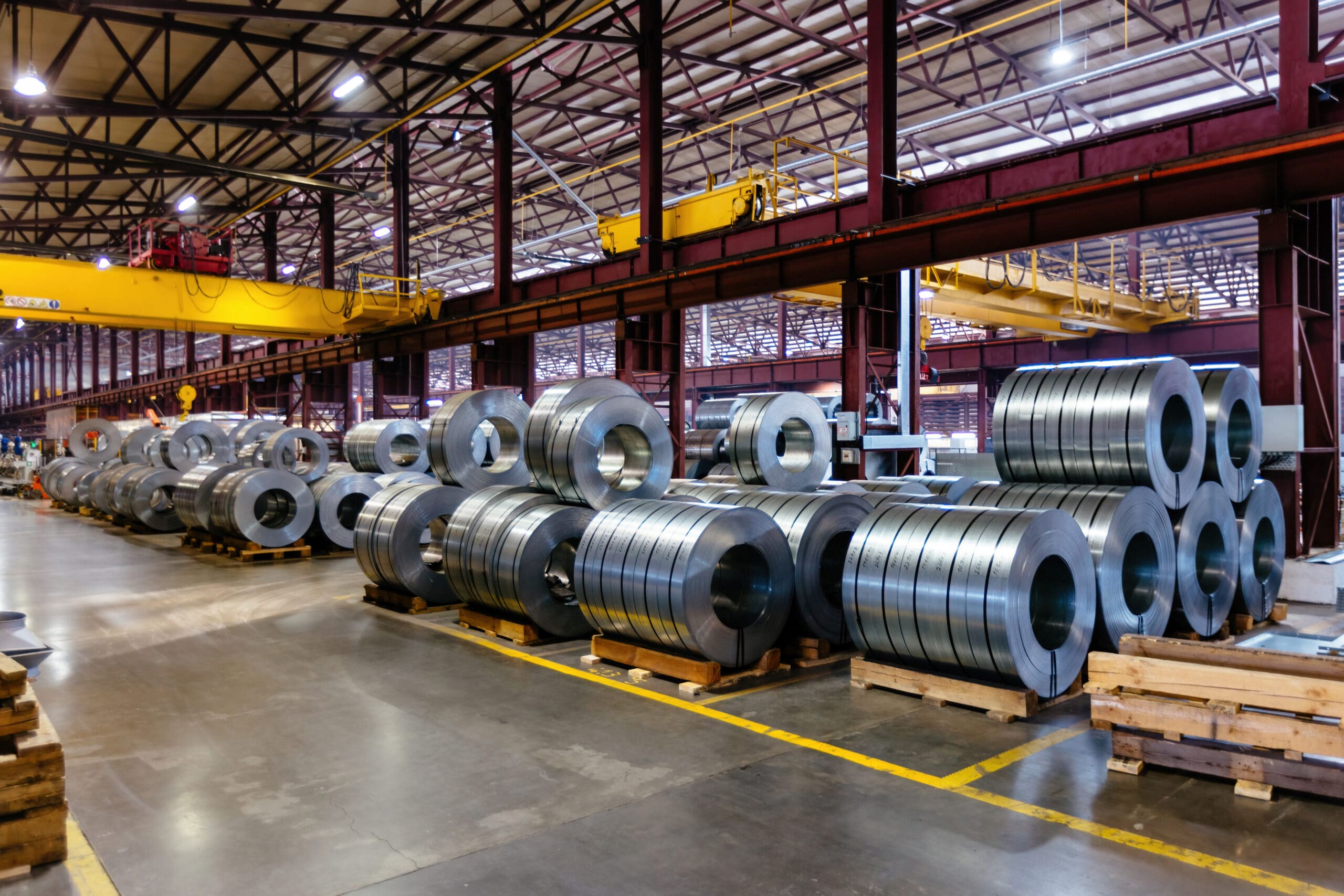LIFO Tax Treatment: The role of LIFO in the Tax Code
Key Findings
- Last-in, first-out (LIFO) and first-in, first-out (FIFO) are two methods of inventory accounting used for both financial accounting and taxA tax is a mandatory payment or charge collected by local, state, and national governments from individuals or businesses to cover the costs of general government services, goods, and activities.
purposes. - Both LIFO and FIFO rely on the accounting principle of deducting costs from income when goods are sold.
- This principle often comes into conflict with the economic principle of deducting costs when incurred, which prevents inflationInflation is when the general price of goods and services increases across the economy, reducing the purchasing power of a currency and the value of certain assets. The same paycheck will cover less goods, bills, and services. It is sometimes called a “hidden” tax, as it makes taxpayers less wealthy due to increased costs and “bracket-creep”, while increasing government spending power.
from eroding the deduction’s value. - However, LIFO comes close to matching the economic ideal while still remaining true to the accounting principle.
- Repealing the option to use LIFO would reduce long-run GDP by less than 0.05 percent ($5.6 billion), long-run wages by less than 0.05 percent, and employment by approximately 7,000 jobs.
- LIFO repeal would also impose a punitive one-time tax on the historical benefits of LIFO, which would come with higher short-term economic costs, particularly on smaller firms incapable of absorbing the tax.
- Repealing LIFO would disincentivize inventory investment, hampering efforts to make US supply chains more resilient and penalizing goods-producing and goods-trading industries.
Introduction
The corporate income taxA corporate income tax (CIT) is levied by federal and state governments on business profits. The corporate income tax is a tax levied by federal and state governments on business profits.
is based on corporate profits or revenues less costs. Calculating corporate profits is not an easy task. Tax policy is heavily influenced by the rules that govern how companies deduct costs. Inventory costs are one type of cost. Companies can use a variety of methods to account for inventory when calculating taxable Income. Taxable income is the amount that is subject to tax after deductions and exclusions. Taxable income is different from gross income for both individuals and corporations.
[1].
The last-in, first-out (LIFO) method allows companies to deduct the cost of their most recent unit of inventory acquired when they make a sale.[2]Repealing LIFO accounting appeared in several Obama administration budget proposals.[3] It also appeared in the Dave Camp tax reform package in 2014, and a few more recent bills in Congress have targeted the provision.[4]
However, LIFO repeal has not been a focus of recent tax policy debates.
Its absence from these debates is commendable. The LIFO method is a good structural component that allows companies to deduct their cost of goods sold. The first-in-first-out (FIFO), on the other hand, allows companies deduct the cost at the price of oldest acquired items, and assumes that the first inventory purchased will be the first to sell. The firm then sells a unit for $40 in the month of December. In this simplified example assume that inventory is the only cost for the company. Subtract $30 from $40 in revenue and you get $10 in profit. Under the LIFO method of inventory accounting, the company would subtract the cost of the most recent unit of inventory, which is the unit purchased in November for $32. Subtract the $32 costs from the $40 revenue and the company will have $8 in profit. In the example, the company would deduct $31 in inventory costs when they sell a unit in December, leading to $9 in income. In the example case here, that would mean the company would deduct $31 in inventory costs when they sell a unit in December, leading to $9 in income.
The cumulative benefits of LIFO relative to FIFO are known as the LIFO reserve.
Firms also have the option to value units of inventory individually, through the specific valuation method.
In this case, the firm would deduct the cost of whichever unit of inventory (the one bought in January, the one bought in November, or the one bought in December) was sold.
Reflecting Two Philosophies of Income
To understand the policy conversation about LIFO and FIFO, one must understand two main philosophies of calculating income: the pure income approach and the cash flow approach.
The income approach focuses on matching deductions for costs with the revenues they generate. If a farm buys a tractor it will use over 10 years, the deductions should be spread out over 10 years. The cash flow approach suggests that companies deduct costs as soon as they are incurred. If a farm invests in a tractor, the cost should be deducted immediately. For accountants and financial analysts the income (or [5]book IncomeBook income) is the amount corporations publicly report in their financial statements. This measure can be used to assess the financial health of an organization, but it does not always reflect economic reality.
The cash flow-based approach makes the most sense from a tax economics perspective because a company can deduct investment costs when they are incurred, without inflation and the time value of money eating away at the deduction’s value (which occurs when deductions are spread over several years). In some cases, companies may use different rules for calculating financial income, and another set to calculate taxable revenue. This makes sense because they measure different things. However, in the case LIFO and FIFO both systems are based, at least on paper on the book income method. Both systems have companies deduct the cost of a unit of inventory when it is sold, not when it is acquired, and companies must use the same system for both financial and taxable income.[6]
However, LIFO can approximate the cash flow-based model of taxation because deducting the cost of the most recent unit of inventory whenever a unit of inventory is sold is often equivalent to deducting the cost of the most recent unit of inventory when it was acquired.
The LIFO/FIFO Decision
Firms face a trade-off when choosing their inventory accounting method. LIFO inventory accounting might be more economically sound, but it can lead to lower reported income for shareholders, which can push managers to adopt FIFO inventory accounting. Accounting methods are chosen by companies based on a few factors. The benefits of LIFO are greater during periods of high inflation. The second factor is the tax rate. A larger deduction under LIFO will be more beneficial if it is offset by a higher rate of tax. Inventory turnover is the third factor: If inventory turnover is high then the difference between the cost of the first-in inventory unit and the last-in inventory unit will be smaller. Therefore, the tax benefits of LIFO are also smaller. Lastly, if a company is expanding overall inventory levels, LIFO tax treatment is more beneficial.
Due to accounting rules, LIFO comes with some additional compliance challenges. Some firms will therefore forgo the relatively small benefits of LIFO due to the above criteria. The statutory corporate tax rate is also lower, reducing the benefit of a larger deduction.
Some industries have seen increased inventory turnover as well. The statutory corporate rate is lower, which reduces the benefit of an increased deduction. Some sectors have also seen an increase in inventory turnover.LIFO’s Macroeconomic Impact and Revenue Impact
By increasing the cost of working, repealing LIFO will reduce long-run GDP (5.6 billion dollars), long-run wage by less than 0.05 percent, employment by about 7,000 jobs and the size the capital stock by 0.05 percent. The long-term impact of LIFO repeal is actually understated, due to the significant transition costs that would be associated with the policy. The static revenue would be $104.7 billion, but when you factor in the smaller economy it is only $97.2 billion. [7]This estimate relies on some assumptions of the Congressional Budget Office and Joint Committee on Taxation’s modeling of repealing LIFO as well as the subnormal goods and lower of cost or market approaches to inventory valuation.
Table 1. LIFO Repeal Would Have Small, Negative Economic Effect
Economic and Budgetary Effects of LIFO Repeal
Tax Foundation Taxes and Growth Model, February 2025.
Unpacking LIFO’s Impact: Taxing LIFO Reserves[8]The 10-year revenue estimate of the effect of LIFO repeal needs context. The revenue would be a windfall in the first few years following LIFO repeal. In the long term, LIFO repeal raises minimal revenue, with the economic costs of LIFO further diminishing tax collections.
Table 2. LIFO Repeal Revenue Mostly a One-Time Shock, Provides Little in Long Run[9]10-Year Revenue Effects of LIFO Repeal, 2025-2034[10]Source: Tax Foundation Taxes and Growth Model, February 2025.[11]Table 3. In the Long Run, LIFO Repeal Raises Minimal Revenue[12]
Revenue Effect of LIFO Repeal, 2034 (Billions)
Source: Tax Foundation Taxes and Growth Model, February 2025
This one-time revenue boost, spread over the first five years of the budget window, results from the taxation of LIFO reserves. LIFO reserves are the accumulated benefits of having used the LIFO inventory accounting method over FIFO inventory accounting.[13]
Levying a tax on these LIFO reserves may seem like a good idea on paper. Taxing past economic activity, instead of future economic activity, does not change the economic incentives for the future. Retroactive taxation can be risky. In some cases, a retroactive act may indicate the possibility of future retroactive acts, which could change investment incentives today. LIFO reserves can vary significantly from year to year, especially in volatile commodity industries. This is due to the fluctuation of prices and economic conditions. Taxing LIFO reserves would cause liquidity problems for companies that have historically used LIFO. Some companies may be able to handle a sudden tax on LIFO reserve, but many smaller, family-owned businesses, who use LIFO, would be more threatened. While some companies may be able to manage a sudden tax on LIFO reserves, others using LIFO, including many smaller, family-owned businesses, would be more threatened.
Taxing LIFO reserves would amount to a tax on a set of companies that have seen increasing inventory costs over time, which is not an appropriate or economically coherent
tax baseThe tax base is the total amount of income, property, assets, consumption, transactions, or other economic activity subject to taxation by a tax authority. A narrow tax base can be inefficient and non-neutral. A broad tax base allows for lower tax rates and reduced administration costs.
. You could also apply retroactive taxes to other types of historical activities, such as a $1.50 tax per pack
excise TaxAn excise is a tax that is imposed on specific goods or activities. Excise taxes can be levied on a variety of items, including cigarettes, alcohol, soda, gasoline and insurance premiums.
Surtaxes are additional taxes that are added to an existing tax, whether it is for individuals or businesses. They can be flat-rate or progressive. Surtaxes usually fund a particular program or initiative. Revenue from broader-based taxation, such as the individual income taxes, is used to fund many programs and services.
Tax credit is a provision which reduces the final tax bill of a taxpayer dollar for dollar. A tax credit is different from deductions and exclusions, which reduce the taxpayer’s final tax bill.
Payments of
in 2005. All of these would have the same supposed efficiency gains of retroactive taxation that taxing LIFO reserve. We do not impose taxes like that for good reasons, and most of those reasons also apply to taxing LIFO reserves.
Beyond the Macro: Where LIFO Repeal Matters in the Economy
Amidst higher inflation, generally, LIFO becomes more beneficial from a tax perspective. Many accounting firms recommended that companies switch to LIFO by 2020. However, according to Hudson Labs, an economic research firm (formerly Bedrock AI), only 30 US companies switched to FIFO between 2021 and 2022. Since 2019, no company has switched from FIFO back to LIFO. If inflation continues to rise, firms will likely switch to LIFO as the tax penalty for FIFO increases.
Furthermore one could see the lack transition to LIFO in the high inflation period 2021-2022 and LIFO being only used by a small minority of US businesses as justification for repealing LIFO. If the lower corporate tax rate has made more businesses marginally prefer FIFO treatment over LIFO treatment, then those who have stayed with LIFO likely did so for very good reasons, such as being particularly inventory-intensive, planning to expand inventory or having a relatively low inventory turnover ratio. If the lower corporate tax rate has made more businesses marginally prefer FIFO treatment over LIFO treatment, then the businesses that have stayed with LIFO likely did so for very good reasons, such as being particularly inventory-intensive, planning to expand inventory, or having a relatively low inventory turnover ratio.
Accordingly, LIFO repeal would punish companies and industries that fit that description.
Physical Goods and Supply Chain Resiliency
One factor behind the decline of LIFO usage over time is the economy-wide shift away from goods and toward services. Inventory is not a large part of COGS at software companies or financial services firms, but it is important for those who sell tangible goods. It would also, in the long term, put American firms (like those in oil and gas and equipment manufacturing) in a less competitive position compared to their international competitors.
Repealing LIFO will also create a tax penality on investments made in supply chain resilience. Tax economist Martin Sullivan noted in Tax Notes in 2022 that the tax penalty would be particularly high during times of high inflation. Ironically, as tax economist Martin Sullivan noted in Tax Notes in 2022, the tax penalty would be particularly high in times of high inflation.
LIFO opponents often cite the concentrated benefits of LIFO in specific industries like oil and gas as a reason for repealing it.[14] But many broad, neutral provisions of the tax code provide disproportionate benefits to some industries. The deduction of R&D investment would be more beneficial to a software company than a paper maker, since R&D is a larger part of a software firm’s business. Repealing LIFO could create a tax penalty on oil and gas producers compared to industries with less inventory. It would also be a disincentive to invest in additional inventory or capacity, which would help reduce the shocks caused by sudden swings in global market.
ConclusionWhile LIFO is rarely the main focus of the overall tax policy debate, it is a sound structural piece of the tax code. Repeal of LIFO would penalize inventory and punish disproportionately the segments of the American Economy that deal with physical goods. It would generate minimal revenue compared to its economic costs in the long term, while it would cause high costs for a small but important subset of the American economy in the short term. Stay informed on the tax policies impacting you.Subscribe to get insights from our trusted experts delivered straight to your inbox.
Subscribe to our Newsletter
The End These
9, I Daniel 23, 2023, Ibid., see also US Census Bureau, “Retailers: Inventories to Sales Ratio,” retrieved from FRED, Feb. 2, 2025, Congressional Budget Office, “Repeal the ‘Last In, First Out’ Approach to Inventory Identification and the ‘Lower of Cost or Market and ‘Subnormal Goods’ Methods of Inventory Valuation” in Options for Reducing the Deficit: 2025 to 2034, Dec. 12, 2024, See, for instance, Alex Muresianu and Alex Durante, “Understanding the Tax Treatment of Inventory: The Role of LIFO,” Tax Foundation, Oct. 12, 2022, Congressional Budget Office, “Options for Reducing the Deficit: 2021 to 2030,” December 2020, The only exception here is administrative burdens.[15]
See, for instance, April Estes, Christine Turgeon, and Jim Martin, “Taxpayers Should Consider Immediate Action to Adopt the LIFO Inventory Method to Expense High Inflation,” PricewaterhouseCoopers, Feb. 1, 2022,
Mark Maurer, “Inflation Has More U.S. Companies Ditching ‘Last-In, First-Out’ Accounting,” The Wall Street Journal, Mar. Mark Thor Domestic R&D Paid for by the Company and Others and Performed by the Company as a Percentage of Domestic Net Sales, by Industry and Company Size: 2022,” National Science Foundation, September 2024, [16]Share this article[17]Twitter
LinkedIn[18]Facebook
Email[19]






